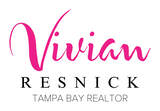Disinfectant wipes have become standard tools-of-the-trade for many Realtors as they tour homes or ferry clients around. But is it really effective?
NEW YORK – Real estate pros take disinfectant wipes to home showings, and they’re using them in their car to clean frequently touched surfaces to help slow the spread of COVID-19. But are they disinfecting correctly?
According to HouseLogic.com, the best cleaners are either a bleach solution or a 70% alcohol solution.
“Follow this bleach recipe: 5 tablespoons (1/3 cup) bleach per gallon of water, or 4 teaspoons of bleach per quart of water,” the site advises, reminding readers to properly ventilate while using bleach. The site also notes that bleach can expire, so check the bottle’s expiration date – and never mix bleach with anything other than water. (But one important note: Bleach still fades fabrics.)
If you don't have bleach, use 70% rubbing alcohol, which is already diluted, HouseLogic says. Disinfecting wipes use an ammonium compound, which could allow viruses to become resistant over time.
“Disinfection isn’t instantaneous,” says Erica Marie Hartman, an environmental microbiologist at Northwestern University in Evanston, Ill. “[For a bleach solution], you want to leave it on the surface for 10 minutes before wiping it off. "
Allow for “dwell time,” agrees an article at Apartment Therapy that features an interview with microbiologists. Disinfecting solutions need to remain on the surface for a certain amount of time to be effective, and that amount of time can vary by product.
For example, Clorox Wipes advises treating a surface “using enough wipes for the treated surface to remain visibly wet for four minutes.” Other disinfectants, including bleach, have their own instructions for proper use. Be sure to check the bottle.
Also, disinfectants don’t provide lasting protection. If a sick person touches the surface right after you clean it, new germs will be left there.
“The reality is that bacteria are complex organisms, and the vast majority of people don’t understand the intricate mechanisms that power them, which leads to them underestimating just how easily they can be reintroduced and quickly multiply on an unprotected surface,” says Morgan Brashear, the scientific communications manager at Proctor & Gamble.
Source: "How to Disinfect Your Home in the Time of Coronavirus," Houselogic.com (March 16, 2020); “3 Things Everyone Gets Wrong About Disinfectants,” Apartment Therapy (March 16, 2020)
© Copyright 2020 INFORMATION INC., Bethesda, MD (301) 215-4688
https://www.floridarealtors.org/news-media/news-articles/2020/03/how-do-you-disinfect-home-correctly
NEW YORK – Real estate pros take disinfectant wipes to home showings, and they’re using them in their car to clean frequently touched surfaces to help slow the spread of COVID-19. But are they disinfecting correctly?
According to HouseLogic.com, the best cleaners are either a bleach solution or a 70% alcohol solution.
“Follow this bleach recipe: 5 tablespoons (1/3 cup) bleach per gallon of water, or 4 teaspoons of bleach per quart of water,” the site advises, reminding readers to properly ventilate while using bleach. The site also notes that bleach can expire, so check the bottle’s expiration date – and never mix bleach with anything other than water. (But one important note: Bleach still fades fabrics.)
If you don't have bleach, use 70% rubbing alcohol, which is already diluted, HouseLogic says. Disinfecting wipes use an ammonium compound, which could allow viruses to become resistant over time.
“Disinfection isn’t instantaneous,” says Erica Marie Hartman, an environmental microbiologist at Northwestern University in Evanston, Ill. “[For a bleach solution], you want to leave it on the surface for 10 minutes before wiping it off. "
Allow for “dwell time,” agrees an article at Apartment Therapy that features an interview with microbiologists. Disinfecting solutions need to remain on the surface for a certain amount of time to be effective, and that amount of time can vary by product.
For example, Clorox Wipes advises treating a surface “using enough wipes for the treated surface to remain visibly wet for four minutes.” Other disinfectants, including bleach, have their own instructions for proper use. Be sure to check the bottle.
Also, disinfectants don’t provide lasting protection. If a sick person touches the surface right after you clean it, new germs will be left there.
“The reality is that bacteria are complex organisms, and the vast majority of people don’t understand the intricate mechanisms that power them, which leads to them underestimating just how easily they can be reintroduced and quickly multiply on an unprotected surface,” says Morgan Brashear, the scientific communications manager at Proctor & Gamble.
Source: "How to Disinfect Your Home in the Time of Coronavirus," Houselogic.com (March 16, 2020); “3 Things Everyone Gets Wrong About Disinfectants,” Apartment Therapy (March 16, 2020)
© Copyright 2020 INFORMATION INC., Bethesda, MD (301) 215-4688
https://www.floridarealtors.org/news-media/news-articles/2020/03/how-do-you-disinfect-home-correctly
 RSS Feed
RSS Feed



